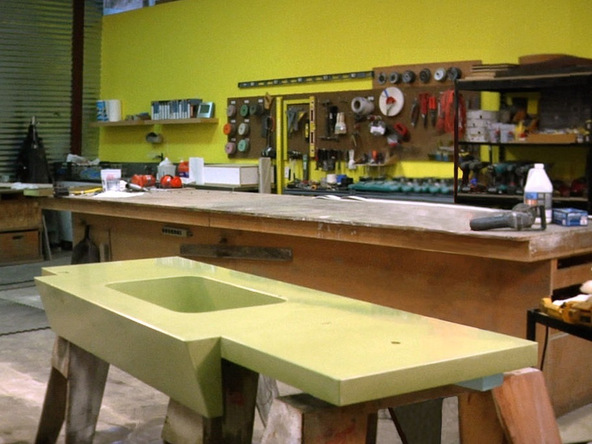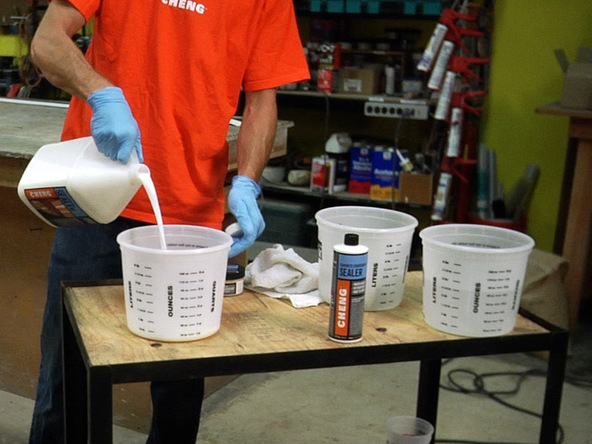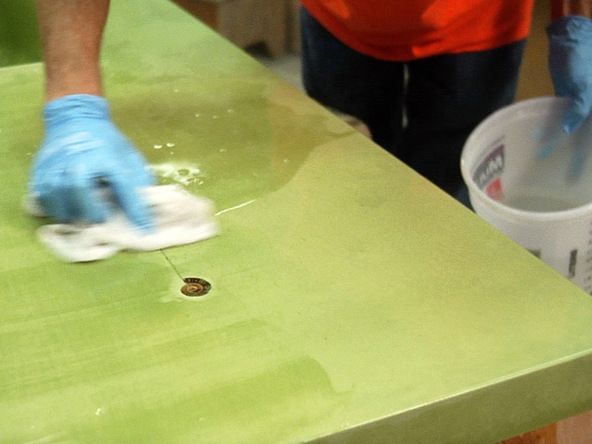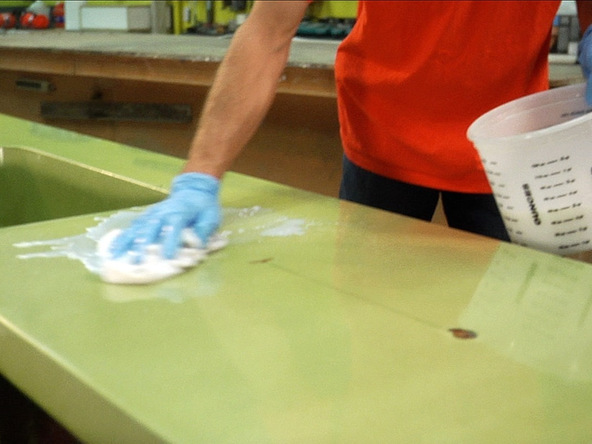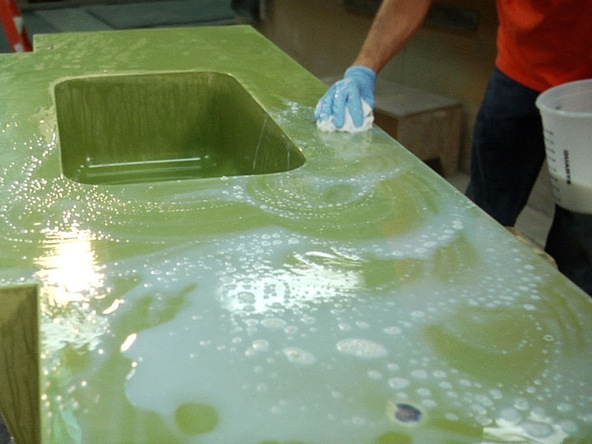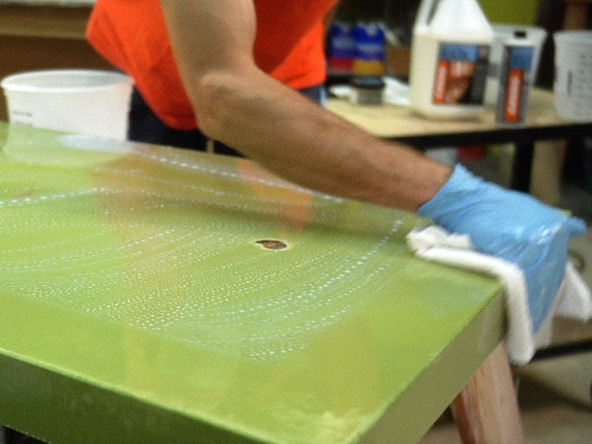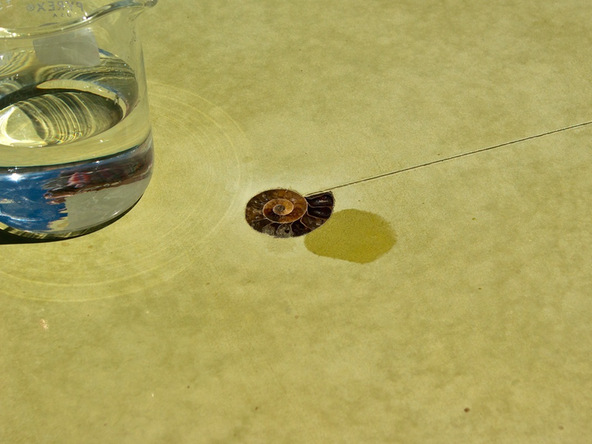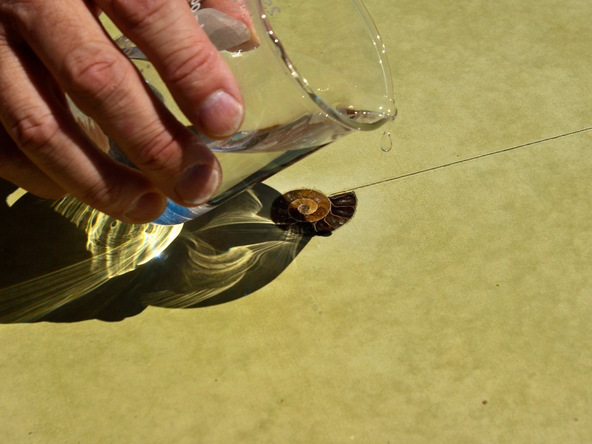Precast Concrete Countertops
SEVEN: SEAL THE COUNTERTOP
Sealing is especially important for a kitchen countertop. Acidic foods like vinegar, wine, mustard, etc. will etch the surface of the concrete and many other things will stain unsealed concrete. Even everyday wear and tear, like dragging pots and pans across the surface, will take its toll on the concrete.
Follow these step-by-step instructions and learn how to seal a concrete countertop using CHENG Hybrid Concrete Countertop Sealer.
Video – How to Seal Concrete Countertops
Step 1 – The Right Environment
Step 2 – Dilution
Step 3 – Soak With Water
Step 4 – Apply Sealer
Step 5 – Wipe Up Sealer
Step 6 – Water Drop Test
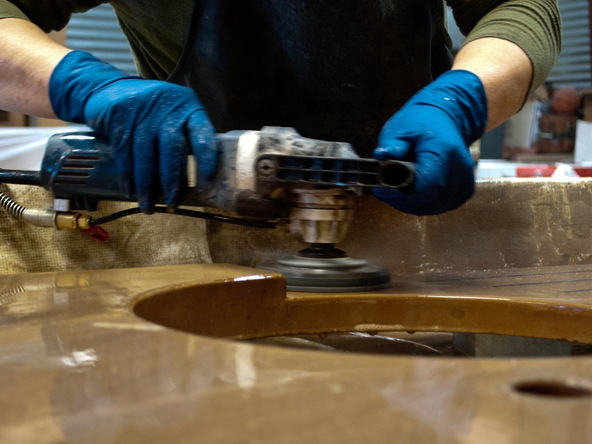
Wet-polish with coarse diamond polishing pads that expose aggregate by cutting deep into the concrete, or use a finer pad for a more uniform finish.
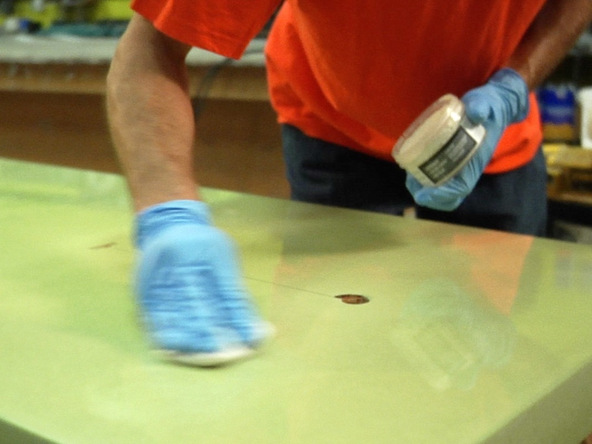
Waxing a concrete countertop protects the sealer from the wear and abrasion of daily use. Pots and pans can take a toll, so wax regularly.

